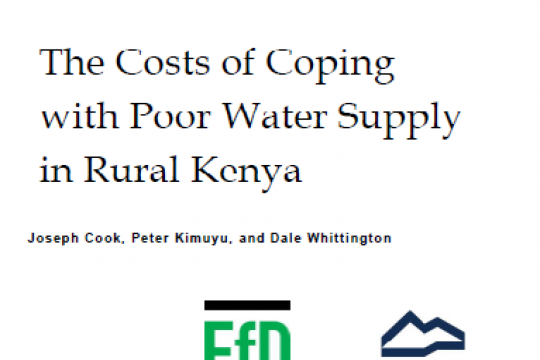As the disease burden of poor access to water and sanitation declines around the world, the non-health benefits – mainly the time burden of water collection – will likely grow in importance in sector funding decisions and investment analysis. We measure the coping costs incurred by households in one area of rural Kenya. Sixty percent of the 387 households interviewed were collecting water outside the home, and household members were spending an average of two to three hours doing so per day. We value these time costs using an individual-level value of travel time estimate based on a stated preference experiment.
We compare these results to estimates obtained assuming that the value of time saved is a fraction of unskilled wage rates. Coping cost estimates also include capital costs for storage and rainwater collection, money paid either to water vendors or at sources that charge volumetrically, costs of treating diarrhea cases, and expenditures on drinking water treatment (primarily boiling in our site). Median total coping costs per month are approximately US$20 per month, higher than average household water bills in many utilities in the United States, or 4.5% of reported monthly cash income. We estimate that coping costs are greater than 10% of income for one-quarter of households in our sample. They are also higher among poorer households. Even households with unprotected private wells or connections to an intermittent piped network spend money on water storage containers and on treating water they recognize as unsafe.


